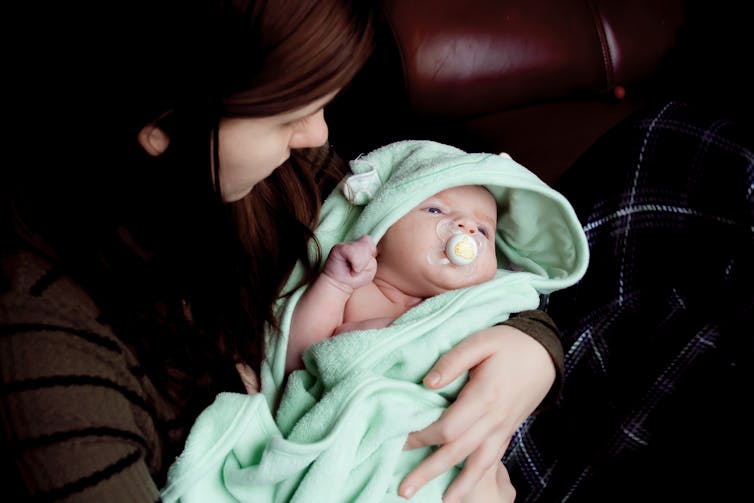Health Canada recently sought public input into new regulations for the use of assisted human reproduction. The consultation process covered everything from in-vitro fertilization (IVF) to egg and sperm donation and surrogacy.
The consultation document prioritizes the health and safety of men and women engaged in family-making projects using assisted human reproduction. It also prioritizes the health and safety of children born of reproductive technologies. Meanwhile, the interests of those who contribute substantially to family-making — egg donors, sperm donors and surrogates — are repeatedly overlooked.
As researchers and advocates for women’s health, we are concerned about the ongoing failure on the part of Health Canada and others to see egg donors, sperm donors and surrogates as both critical participants and patients in the use of reproductive technologies. We urge policy makers to give due consideration to their health, well-being and interests in the making of public policy on assisted human reproduction.
A narrow focus
The Assisted Human Reproduction (AHR) Act — the legislation governing the use of human reproductive technologies in Canada — was passed in 2004. As originally drafted, the act includes a number of provisions that require regulations in order for them to come into force. Most of these have never been introduced, including rules about how those donating eggs, sperm and embryos and those who act as surrogates should be paid.
Now, some 13 years later, Health Canada is finally taking the necessary steps to start drafting the missing regulations. An early step in this process has involved limited public consultation on a discussion document titled Toward a Strengthened Assisted Human Reproduction Act: A Consultation with Canadians on Key Policy Proposals. This document provides information about the direction of regulations-to-come in support of the AHR Act and asks the public for input.
An important problem with the discussion document (and the direction of the regulations it outlines) is the narrow focus on those who use assisted reproduction to build a family and those who are born of these technologies.
What about those who assist others with their family-making project? Assisted human reproduction often involves others — including egg donors, sperm donors and surrogates. In the discussion document, their interests are too often overlooked.
Risks of egg donation
In the section on “product safety,” for example, the discussion document provides considerable detail about the ways in which eggs and sperm (gametes) should be acquired so as to protect the health and safety of those using assisted reproduction, and of the children born.

But what about the health and safety of the gamete providers and the surrogates? The risks associated with egg production, for example, are substantial. And there are numerous reports that informed consent is lacking, as is adequate follow-up care to address potential health risks such as ovarian hyperstimulation syndrome.
Nowhere does the government discussion document address the health and safety of the women from whom the so-called “products” are obtained.
‘Third parties’ or vital contributors?
In another section of the discussion document on the “risk of transmission of disease,” the focus is again narrowly on the would-be-parents and the children conceived. Accordingly, when reproductive material is tested and screened, the would-be parents are to be informed of the tests results so that they can take this information into consideration in making their reproductive choices.
There is no mention, however, of disclosing information about genetic or infectious disease to gamete donors and surrogates. Yet, surely they have an even greater claim on such information that they require to make both health-care and reproductive choices.
This lack of attention to the interests of gamete donors and surrogates has been a problem with the regulation of assisted reproduction in Canada from the beginning. These participants in assisted human reproduction are rarely included in policy consultations and their experiences are rarely studied.
They are typically referred to as “third-parties” in the reproductive process when they are, in fact, primary actors. In these ways they are thought of, and often treated, as nearly extraneous to the family-making projects they enable.
Women as ‘spare parts’ and ‘walking wombs’
Scholars in the field of assisted human reproduction (including us), have documented the many ways in which egg donors have come to be thought of as “spare parts” rather than patients, and surrogates have long been dismissively thought of as “walking wombs.”
This Health Canada consultation fails to see gamete donors and surrogates as participants in assisted reproduction, fully deserving of the same high-quality care as those who use the technologies to build their families. This is indicative of a broad and ongoing failure to take seriously the rights and interests of gamete donors and surrogates.
As Health Canada moves forward with this regulatory process, it is critical that all who participate in assisted human reproduction come to be understood as key actors in the use of reproductive technologies.

